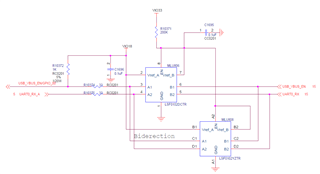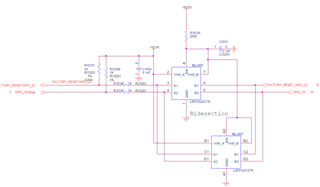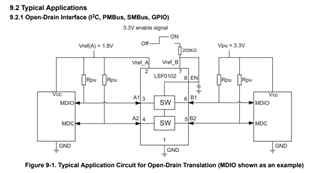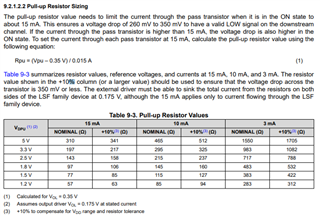Other Parts Discussed in Thread: SN74AXC2T245,
Dear team
There is a good news that we design in LSF0102DCTR in customer's new project.
Could you help to review the schematic?


Many thanks
Denny
This thread has been locked.
If you have a related question, please click the "Ask a related question" button in the top right corner. The newly created question will be automatically linked to this question.
Dear team
There is a good news that we design in LSF0102DCTR in customer's new project.
Could you help to review the schematic?


Many thanks
Denny
Hey Denny,
Are they planning to have both device populated at the same time or are they just placing two footprints for supply reasons?
Hi Dylan
Thanks your reply.
Place two footprints for supply reason.
Many thanks
Denny
Hey Denny,
Thanks for confirming. Everything in the schematic looks good. I don't see pull-ups on the B side (they may be on another page?). They are not needed if the signals are only going in the B to A direction with push pull signals (it looks as though this may be the case).
In case of signal going on both directions, for example UART communication, should we have pull up resistors on both side? which value is recommended?
As per datasheet I found below details. (In my application, I have UART going in between two controllers one is 1.8V and other is at 3.3V)


Hey Jigar,
So for UART, I actually recommend they use the SN74AXC2T245 device instead. Its more suited for that interface.
If they want to keep using LSF0102, I would have them add pull-ups on both sides to be safe. UART data rate is pretty low so they can likely get by with a 1k pull-up. Its most important for the TX or RX signal that will be shifted from 1.8 V to 3.3 V. These training videos on LSF will be a great help as well.
Thank you Dylan. However, SN74AXC2T245 needs DIR pins to be controlled. I would like to have less complicated control for this conversion.
Hello Jigar,
I agree with Clemens, with the SN74AXC2T245, you can just tie the DIR pins directly to GND or VCC so that the control is fixed. Essentially there is no complicated control because the directions are tied directly so that they are fixed in the direction you want.
You can see section 8.4 for how to configure the directionality of each bit.
Best,
Michael